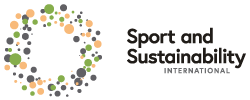What Percentage of Europeans Never Exercise? Hint: It’s More Than You Think
Keep your eyes up here. No peeking. The European Union did a survey, what do you think was the percentage of Europeans over the age of 15 who reported that they NEVER exercise or participate in sport?
Any guesses? 10%? 25%? More?
The response was that nearly half of all Europeans (forty six percent) say that they never exercise, and a further 9% say that they exercise less than once a month.
That’s not an inspiring stat. An innovative EU project launched in December 2022 is doing what it can to bring those numbers down.
What is City, Green, Go!?
City, Green, Go! is a project led by the Budapest Sports Service Provider that aims to get EU citizens back in motion with a focus on urban settings (City), protecting the environment (Green), and physical activity (Go!).
The project will develop a directory to guide organisations and municipalities in implementing environmentally friendly exercise initiatives as well as host workshops and build a website to share important information and resources.
Project partners include Sport and Sustainability International (Switzerland), Sport and Citizenship (France), Isinnova (Italy), the International Sport and Culture Association (Denmark), and the Municipality of Budapest as an associated partner.
How will City, Green, Go! improve urban physical activity and the environment?
The project starts with a research phase where the group will collect good practices of grassroots sports initiatives that promote environmental sustainability. This phase is led by Italian research and consulting organisation, Isinnova.
Sport and physical activity initiatives that fit the project’s urban and environmental criteria will be analysed to create a baseline of successful characteristics, serving as a foundation for the final directory.
“There are a lot of criteria to meet: zero waste, renewable energy, respecting biodiversity, water use, etc.,” explains Réka Veress, project coordinator of City, Green, Go!. “Many of the initiatives did not meet all of these criteria. It’s something for organisers to consider — they need to think beyond just using reusable cups if they want to qualify as an environmentally friendly program.”
The directory, intended for use by sport and environmental organisations at a local level along with municipalities and NGOs, will provide direction for these key stakeholders on how to organise successful initiatives that fit within the City, Green, Go! compass.
“We will also organise online and in-person workshops that teach people how to use the directory,” says Veress. “And if a municipality wants to spread this message, we will provide step-by-step guidance on how they can organise a workshop to do that.”
Why is the city focus so important?
EU data suggests that by 2050, around 84 percent of people will live in urban environments. Living in a city exposes individuals to some added health risks due to worse air quality and higher rates of pollution.
The World Health Organization (WHO) also finds that people living in urban environments are more likely to be physically inactive, more likely to eat an unhealthier diet, and more likely to be exposed to infectious diseases — all reasons why it’s important to ensure regular exercise.
These are all health risks that cities need to address.
“Budapest right now is trying to reduce vehicle circulation in the city centre as much as possible,” says Bence Garamvölgyi, managing director at the Budapest Sports Service Provider. “It’s a very difficult task, but one of the ways to tackle that is by promoting active mobility like cycling, walking, and running that serve both enhancing physical activity and environmental protection.”
As part of the City, Green, Go! project, Garamvölgyi adds that the ultimate goal is to provide an urban setting that is more environmentally friendly and healthier for its citizens. He hopes that the project will produce useful tools that can be adopted in any location.
What role does SandSI play in the project?
While active and engaged in all aspects of the project, SandSI will play a pivotal role in two key stages: testing the directory and dissemination.
SansSI will test online platforms to host the directory and, using its vast global network, it will disseminate the findings of the project and share access to the directory.
“We want to leverage SandSI’s global reach to share the knowledge that we gain in the project,” says Garamvölgyi. “It’s a great way to promote the project outside of our internal partners.”
Garamvölgyi notes that projects like this can get stuck on their own “project islands” and only reach the partners directly involved. With SandSI and the other international partners, the project can expand its reach and communicate its findings with other sport organisations and municipalities around the world.
The City, Green, Go! project runs until November 2024 and is on the lookout for best practices and collaboration with other similar projects. If you’d like to find out more or have any information to share please contact us and we can put you in touch with the project managers.
To learn more about SandSI’s work, or how you can get involved, follow us onLinkedIn andTwitter, subscribe to our newsletter, become amember, orsend us a message to help us keep the sustainability ball rolling.


